Standard option - deaf facades from chipboard (particle board), mirror facades, as well as their various combinations. This is the most budgetary solution, besides allowing you to correct the flaws of the room - for example, expand it with mirrors.

In practice, most often they combine several types of facades in one product, obtaining a variety of interior solutions. The combined facades of the wardrobe make it possible to fit it into the room of any style, and even make it the main decorative element of the interior.

Options for combining door facades
By design, combined facades can be divided into several groups:
- Classical. These are solid facades from sheets of chipboard under a tree, as well as mirror facades. They are combined in various combinations.
- Geometric. In this case, the door facades of the sliding wardrobe consist of separate rectangles, which can be decorated with glass, a mirror or chipboard. Here various combinations of finishing materials are possible, it all depends on the idea of the designer.
- Diagonal. On the facade there are metal profiles dividing it into parts directed at an angle to each other. As in the geometric version, a combination of a variety of materials is possible in the decoration of the facade.
- Sector. Profiles divide the facade into separate cells, each of which is designed in accordance with design sketches.
- Wave. Instead of rectilinear profiles, curvilinear ones are used, which allows you to divide the facade with soft, smooth lines. This is the most expensive option in manufacturing, since profiles and material for their filling are made individually.
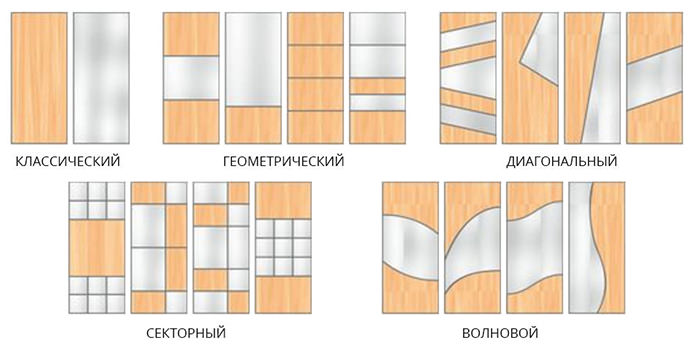
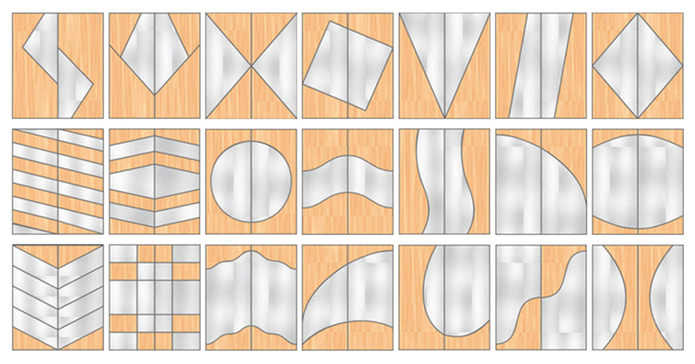
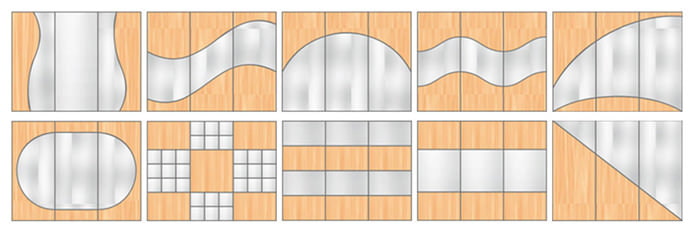
Materials for filling the doors of wardrobes
The design of the doors of a sliding wardrobe is determined not only by what principle of fastening of the finishing material you have chosen, but also by what type of material will fill the doors.
Chipboard
The most popular option due to the low price. Its main advantages: durability, mechanical resistance, a variety of colors of the plate, easy care and safety in operation. There is only one drawback of such facades of sliding door wardrobes - a rather modest appearance. Such a cabinet is likely to be invisible in the interior, however, many achieve exactly this effect.
Mirror
Completely mirrored doors will cost more than combined with chipboard. The thickness of the material is 4 mm; a film (amalgam) is applied on the back of the mirror to protect it from damage.
Lacomat
This is called frosted glass, it is matted using etching with hydrofluoric acid. The thickness of this glass is about 4 mm. It creates the effect of translucency, while hiding the contents of the cabinet and allowing you to navigate - what is where.
Lacobel
This option is often used in combined facades of wardrobes. Lakobel - glass coated on one side with a layer of varnish, usually colored.
Decorative glass or mirror
- Sandblasting drawings. For facades, frosted glass is used - with the help of a sandblasting machine, various drawings are applied to it. They can be either ready-made or made to your order.
- Etched mirror. An additional matte pattern can be etched on the mirror; such facades can become an original decoration of the interior.
Plastic
The facades of the doors of the wardrobe made of plastic are a fairly budget option, opening up great opportunities for combination. Plastic can be transparent, opaque or translucent, shiny or matte, and the color can be selected from several dozen different shades.
Bamboo and rattan
- Bambuk. This is a natural material, suitable for decorating the facades of cabinets in such styles as oriental, ethnic. Bamboo strips are glued to the fabric, which is fixed on the panels of particleboard or MDF. These stripes can be of different widths and different shades.
- Rattan. This is another natural material derived from rattan wood. A core and bark are used, intertwined in a special way, and fixed on chipboard or MDF panels. The combined facades of the sliding wardrobe, made of natural materials, are particularly suitable for environmental design.
Decoracryl
An interesting material that combines the advantages of synthetic and natural materials. Between two panels of acrylic, which can be either completely transparent or matte, natural elements are attached - the leaves of various trees, beautiful herbs, bamboo or coconut fibers, even shells and butterflies.
Faux leather
The design of the doors of the wardrobe with artificial leather will make the storage system solid, such a cabinet is especially suitable for an office or library in your apartment. Artificial leather can have various colors and textures; it is fixed on panels made of chipboard or MDF.
Photo printing
On paper that adheres to the glass on the back (or on the glass itself), any photograph of your choice is applied. Typically, each company has a collection of images for every taste, but you can use your personal photo.
Photo gallery
By combining the layout of profiles on the facade of the wardrobe and filling them with various materials, you can create a unique piece of furniture that fits any interior.



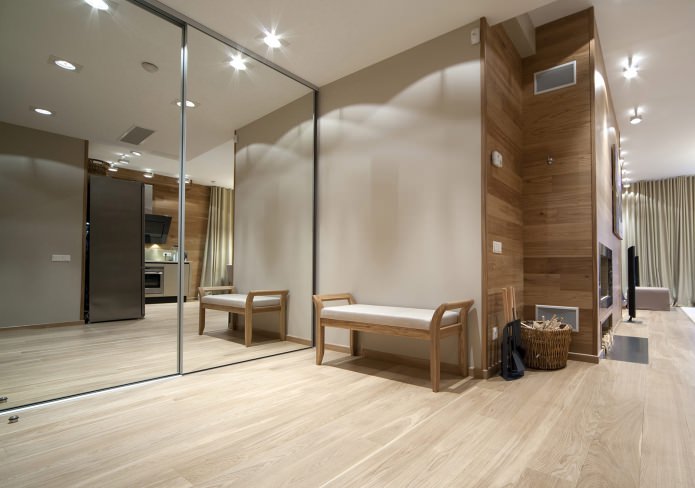
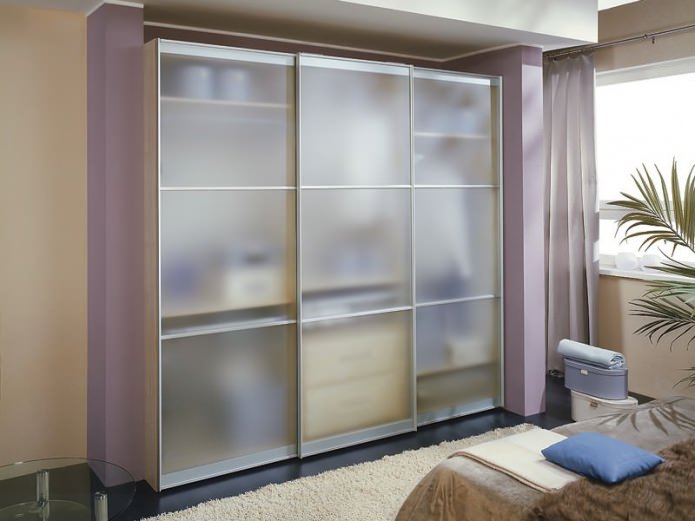
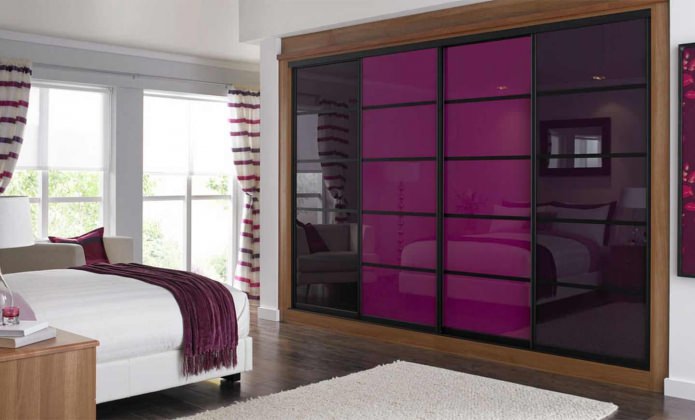
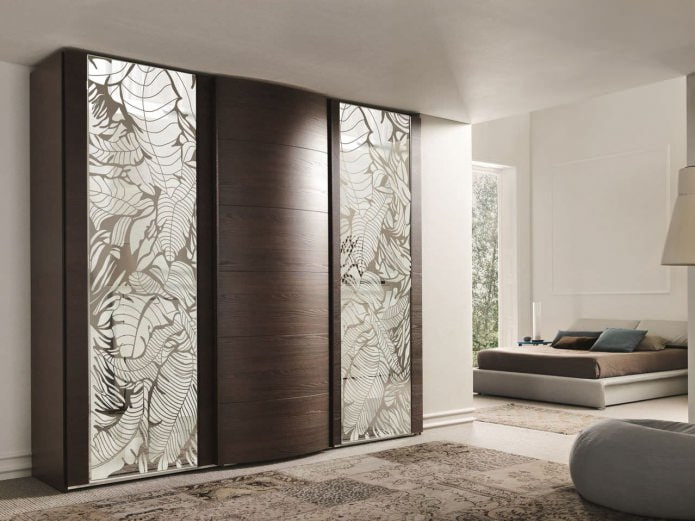
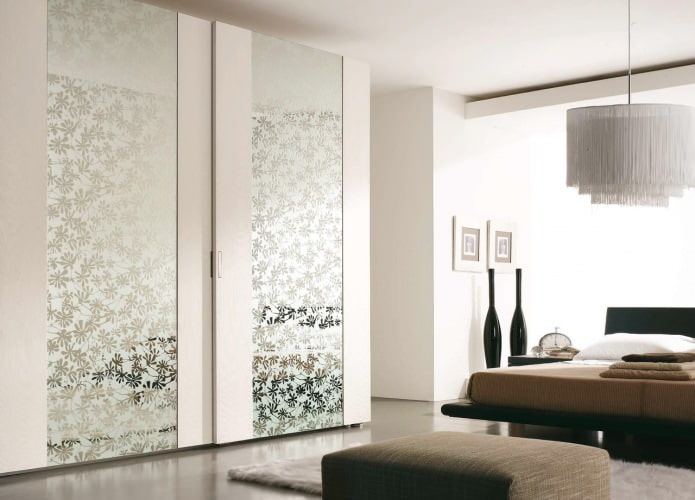
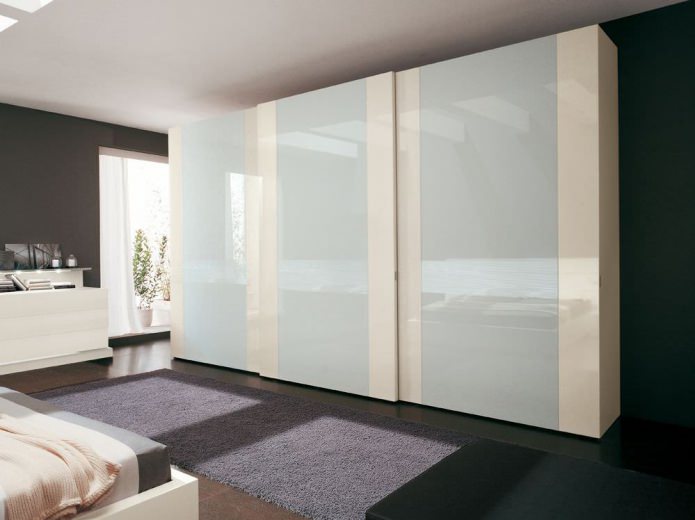
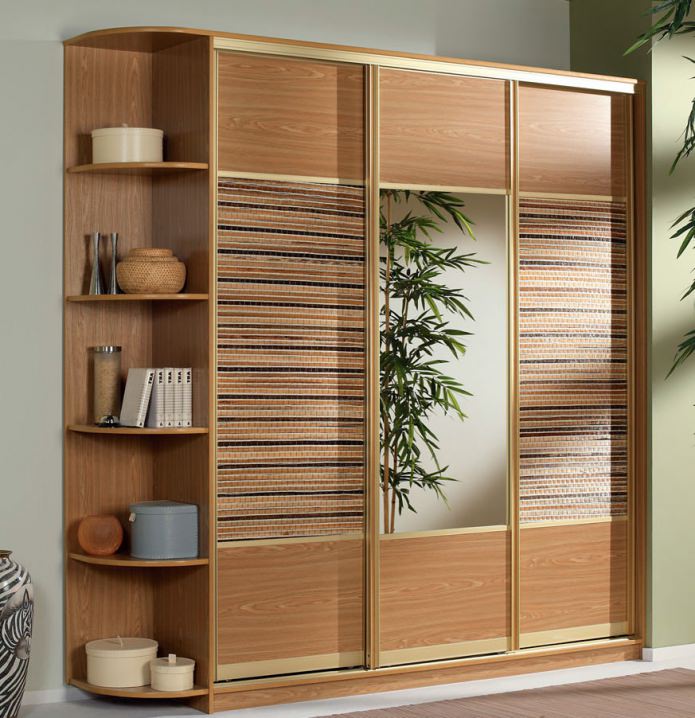
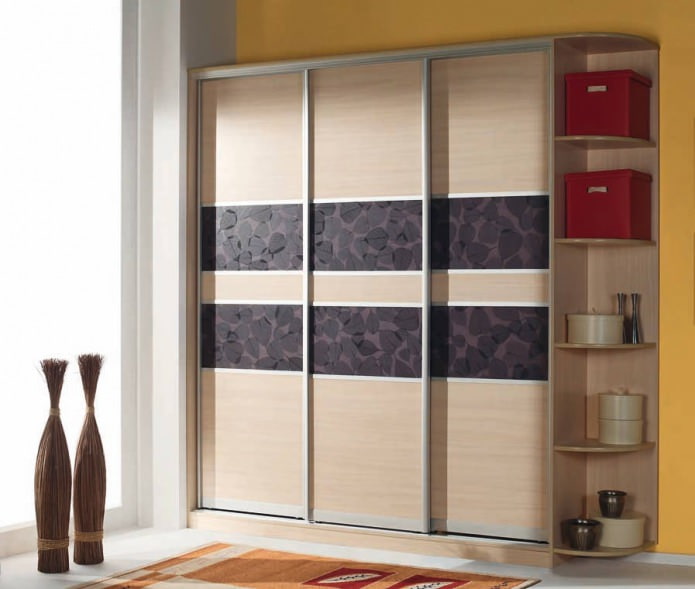
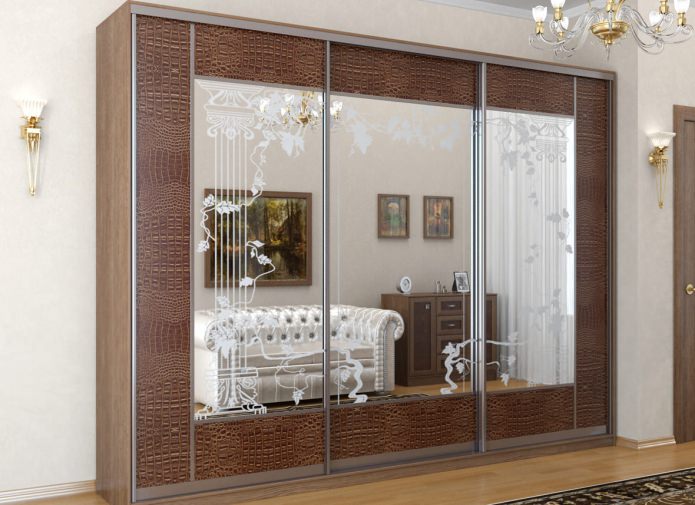
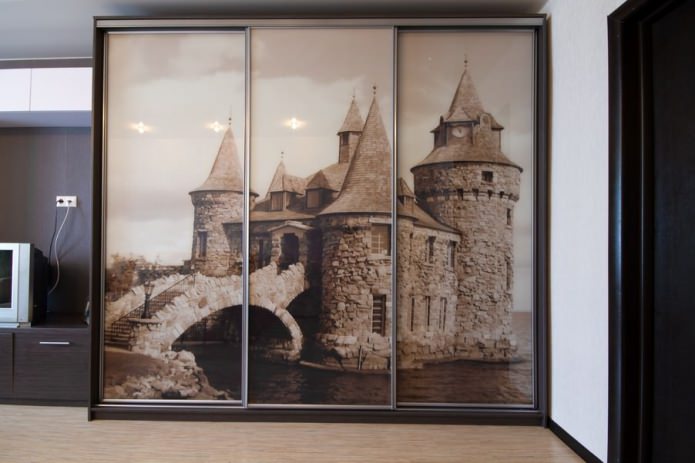
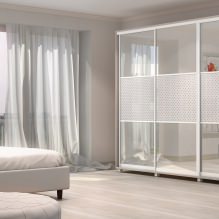
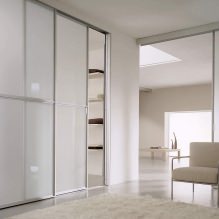
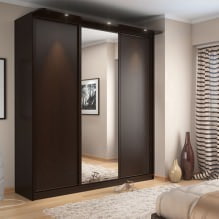
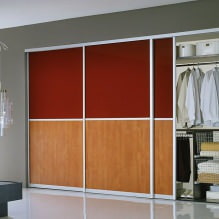
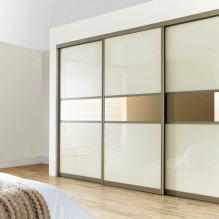
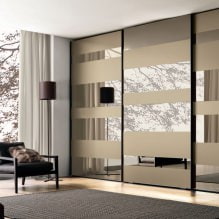

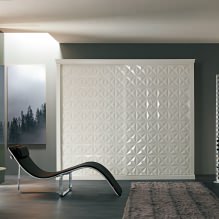
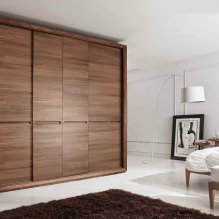
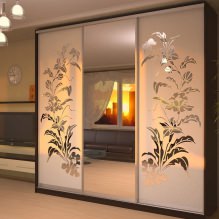


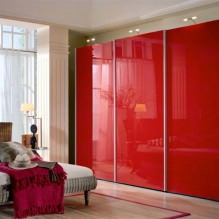


 Top 10 Trends in Interior Design 2020
Top 10 Trends in Interior Design 2020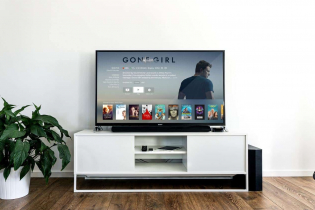 Rating of cheap TVs with Smart-TV
Rating of cheap TVs with Smart-TV New Year's LED garlands on AliExpress - we disassemble while it is hot so that the house is bright
New Year's LED garlands on AliExpress - we disassemble while it is hot so that the house is bright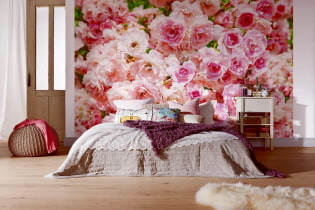 Wall mural with flowers in the interior: living wall decor in your apartment
Wall mural with flowers in the interior: living wall decor in your apartment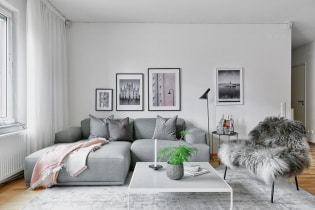 Gray sofa in the interior: views, photos, design, combination with wallpaper, curtains, decor
Gray sofa in the interior: views, photos, design, combination with wallpaper, curtains, decor Interior in peach tones: meaning, combination, choice of finishes, furniture, curtains and decor
Interior in peach tones: meaning, combination, choice of finishes, furniture, curtains and decor